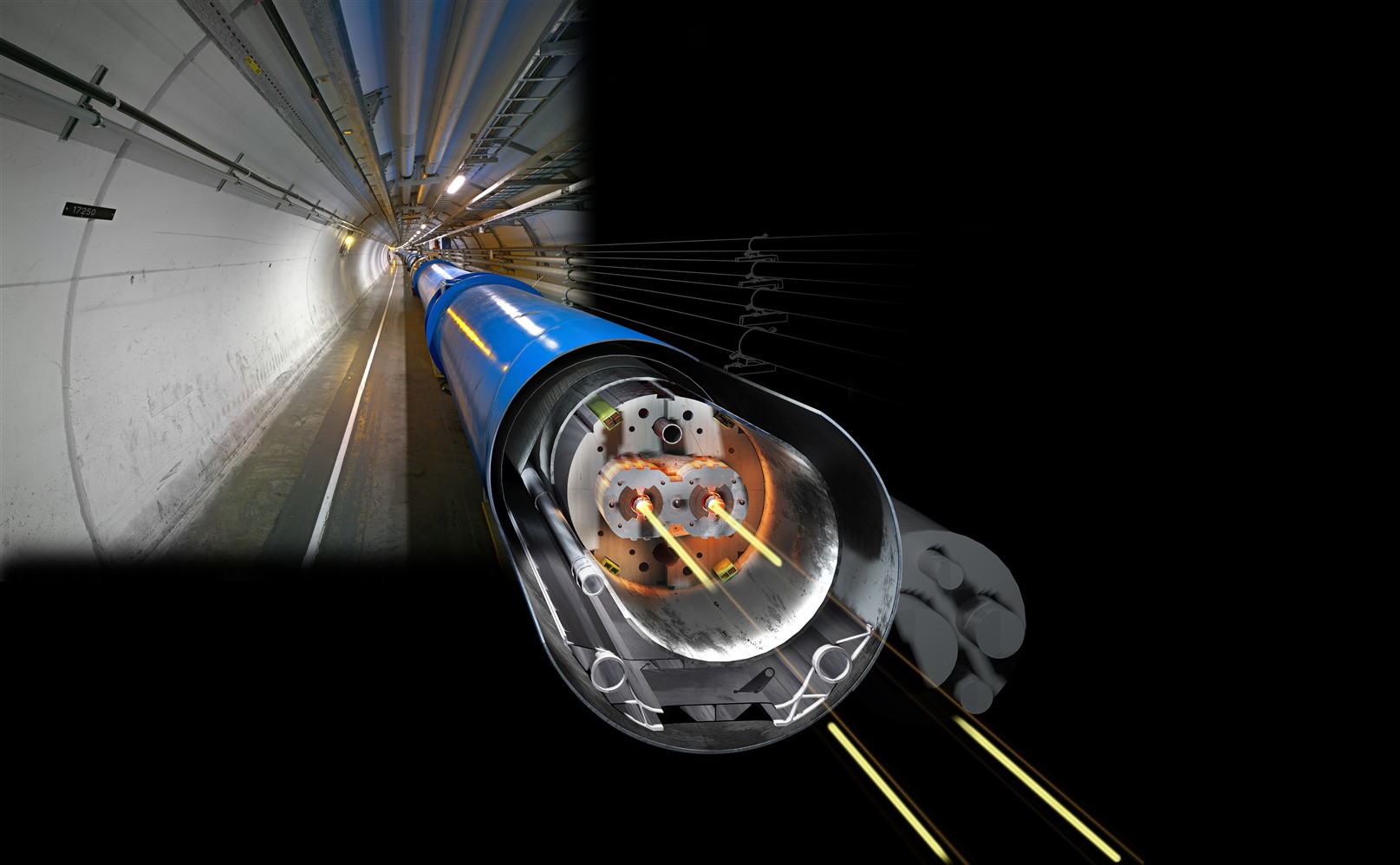Moon pulls CERN particle collider out of shape


Add this to the list: "particle collider." That's right, I'm referring to those elaborate, multi-billion dollar physics machines that smash protons and other subatomic bits against each other in scientists' efforts to unravel the mysteries of the universe and solve other trivial matters.
Be careful if you operate one during a full moon!
According to the website Talking Points Memo, the gravitational pull of a recent full moon tugged on one side of CERN's Large Hadron Collider in Geneva more than on the other, "ever so slightly deforming the tunnel through which the proton beams pass."
But never fear. This seems to have happened before, and CERN's astute operators were on the case.
"In order to keep the proton beams on track, the operator at the LHC’s control center had to subtly alter the direction of the proton beams to accomodate the Moon’s pull, 'every hour or two,' " writes TPM's Carl Franzen.
This all came to light because scientist Pauline Gagnon from the University of Indiana had noticed an anomaly in her data while conducting an experiment at the LHC. So she called the control room, and as she recalls in a blog post,
“Oh, those dips?”, casually answered the operator on shift. “That’s because the moon is nearly full and I periodically have to adjust the proton beam orbits.”
Gagnon further explains,
"The LHC is such a sensitive apparatus, it can detect the minute deformations created by the small differences in the gravitational force across its diameter. The effect is of course largest when the moon is full.”
Gets you wondering, doesn't it? CERN is using its $9 billion contraption to mimic conditions just after the Big Bang, and to try to find the elusive Higgs Boson - the so called God particle that many believe would serves as the capstone to the Standard Model of Physics (watch for the latest news about this soon from Laura Shin on SmartPlanet's Science Scope blog). Has the moon been hiding Professor Higgs' famous particle all these years?
And what about those misbehaving neutrinos? You remember - the ones that supposedly traveled faster than light, only for CERN to eventually admit that it had made a measuring mistake. Those didn't involve the particle collider. But if the moon can tug on the LHC, could it not give a kick to a traveling neutrino? Do we need to reopen the case?
Feel free to howl with your thoughts in the comments section below.
Photo: CERN
The Hunt for Higgs, on SmartPlanet:
- The elusive Higgs surfaces! Prof. Higgs that is. 'God particle' physicist in rare interview
- CERN: We’ll find that Higgs boson even if it takes 4 trillion electrovolts
- Particle of doubt: The Higgs boson and scientific uncertainty
The Neutrino Saga, on SmartPlanet:
- Another neutrino firing: Faster-than-light physicist quits under pressure
- Whoa neutrinos, whoa! CERN says particles not so fast after all
- Light gets rematch vs neutrinos as CERN declares technical glitch
- Neutrinos outrace light again
- CERN’s faster-than-light neutrinos: It’s a do-over
- Faster-than-light neutrinos come down to earth
- New dimensions on the speed of light
- Get ready for time travel
More CERN on SmartPlanet:
- The solar panel made from a particle collider
- Fame! Science and energy hit the bright lights
- Slowing down antimatter at CERN
- How to save energy on particle colliders
- The practical uses of antimatter
This post was originally published on Smartplanet.com